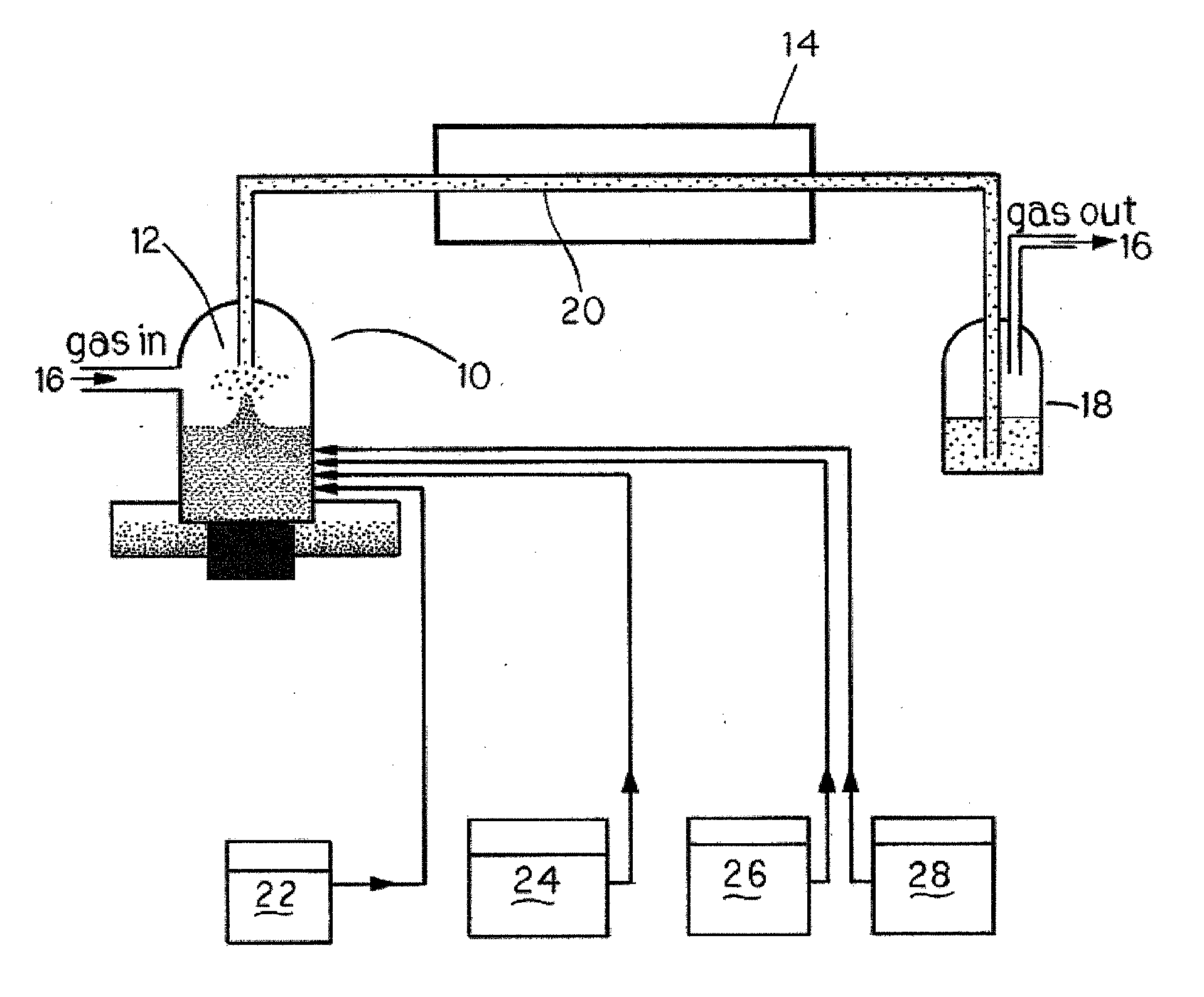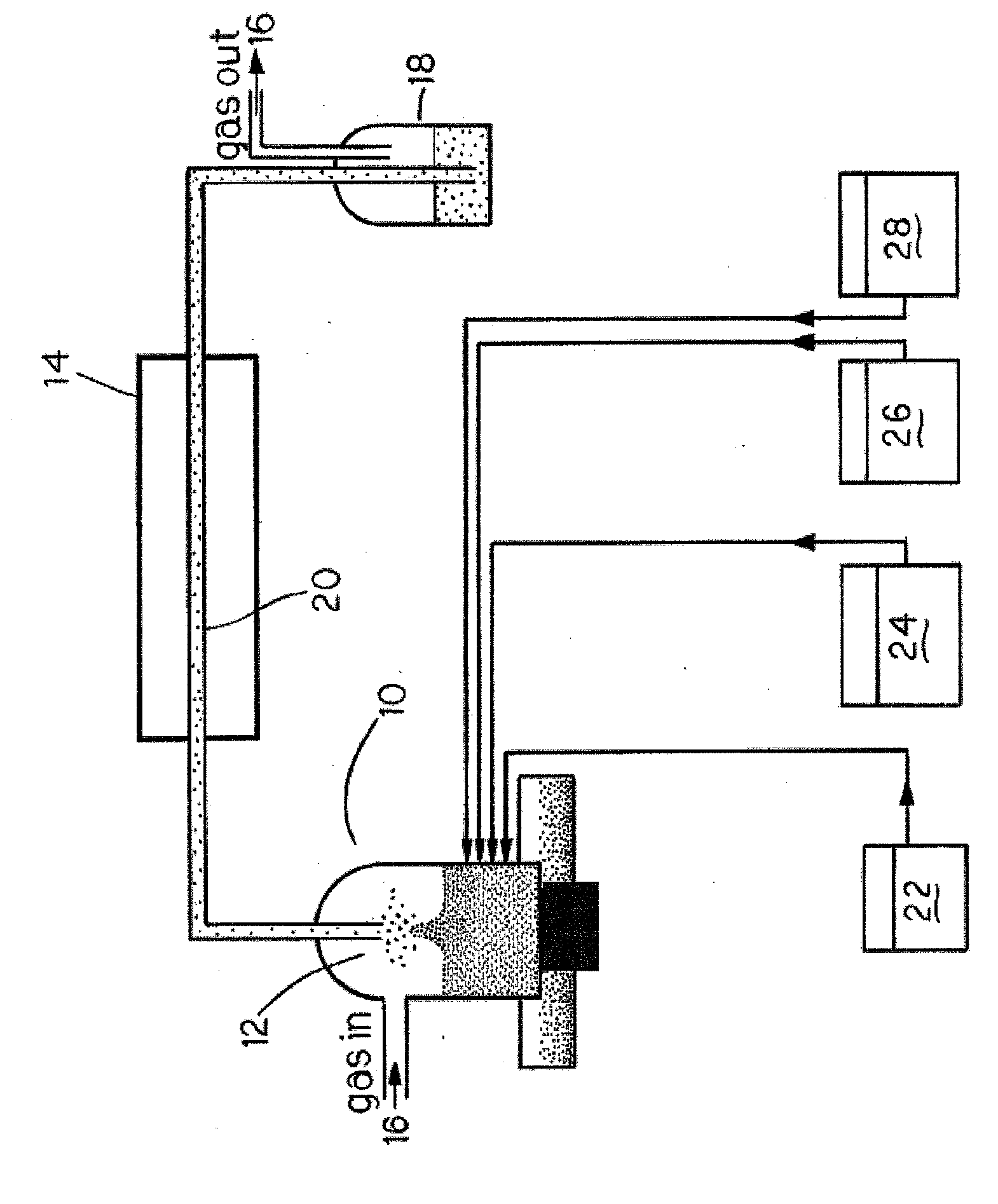Controlled chemical aerosol flow synthesis of nanometer-sized particles and other nanometer-sized products
a technology of nanocrystals and aerosols, applied in the field of nanocrystal products, can solve the problems of difficult scale-up, limited application range of nanocrystals, and limited application range of each approach, and achieve the effects of easy synthesis, low cost, and high quality
- Summary
- Abstract
- Description
- Claims
- Application Information
AI Technical Summary
Benefits of technology
Problems solved by technology
Method used
Image
Examples
examples
[0031] Preliminary results show that the surfactant USP approach of the present invention works well and in fact desired nanoparticles can be formed in an aerosol flow. Experiments to test this approach have been successful and high quality, different size CdS, CdSe, and CdTe quantum dots were synthesized from aqueous and organic solutions, respectively.
[0032] Using a similar approach, both nanostructured and nanosized MoS2 can be synthesized from water and organic solutions. As a precursor for water solution synthesis, the single source precursor (NH4)2MoS4 (see P. Afanasiev, C. Geantet, C. Thomazeau, B. Jouget (2000). “Molybdemum polysulfide hollow microtubules grown at room temperature from solution.”Chem. Comm. 1001-1002) can be used.
[0033] 1. Synthesis of CdS from aqueous solutions. Experimental setup for the synthesis of nanocolloids is shown in FIG. 1. A solution containing 10−2 M of a soluble cadmium salt (e.g., Cd(NO3)2, Cd(CH3CO2)2, etc.), 2×10−2 M of a thermally decompo...
PUM
| Property | Measurement | Unit |
|---|---|---|
| volume | aaaaa | aaaaa |
| volume | aaaaa | aaaaa |
| diameter | aaaaa | aaaaa |
Abstract
Description
Claims
Application Information
 Login to View More
Login to View More - R&D
- Intellectual Property
- Life Sciences
- Materials
- Tech Scout
- Unparalleled Data Quality
- Higher Quality Content
- 60% Fewer Hallucinations
Browse by: Latest US Patents, China's latest patents, Technical Efficacy Thesaurus, Application Domain, Technology Topic, Popular Technical Reports.
© 2025 PatSnap. All rights reserved.Legal|Privacy policy|Modern Slavery Act Transparency Statement|Sitemap|About US| Contact US: help@patsnap.com



